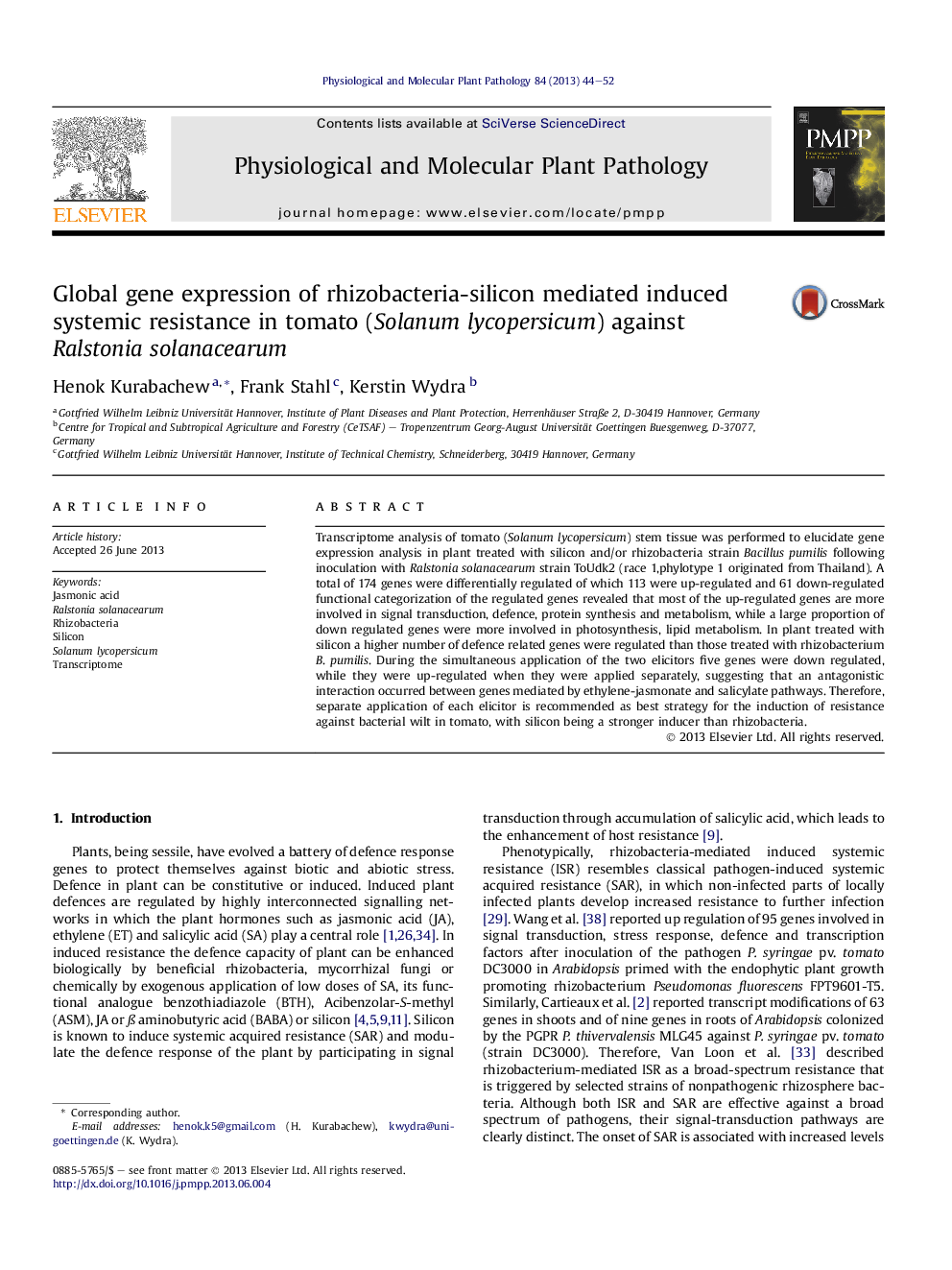| Article ID | Journal | Published Year | Pages | File Type |
|---|---|---|---|---|
| 2836384 | Physiological and Molecular Plant Pathology | 2013 | 9 Pages |
•Silicon-rhizobacteria mediated transcriptome analysis of tomato was performed.•A total of 174 genes were differentially regulated.•Of 174 genes 113 were up-regulated and 61 down-regulated.•Most of the up-regulated genes involved in signal transduction, defence.•Silicon found as strong inducer resistance than rhizobacteria.
Transcriptome analysis of tomato (Solanum lycopersicum) stem tissue was performed to elucidate gene expression analysis in plant treated with silicon and/or rhizobacteria strain Bacillus pumilis following inoculation with Ralstonia solanacearum strain ToUdk2 (race 1,phylotype 1 originated from Thailand). A total of 174 genes were differentially regulated of which 113 were up-regulated and 61 down-regulated functional categorization of the regulated genes revealed that most of the up-regulated genes are more involved in signal transduction, defence, protein synthesis and metabolism, while a large proportion of down regulated genes were more involved in photosynthesis, lipid metabolism. In plant treated with silicon a higher number of defence related genes were regulated than those treated with rhizobacterium B. pumilis. During the simultaneous application of the two elicitors five genes were down regulated, while they were up-regulated when they were applied separately, suggesting that an antagonistic interaction occurred between genes mediated by ethylene-jasmonate and salicylate pathways. Therefore, separate application of each elicitor is recommended as best strategy for the induction of resistance against bacterial wilt in tomato, with silicon being a stronger inducer than rhizobacteria.
